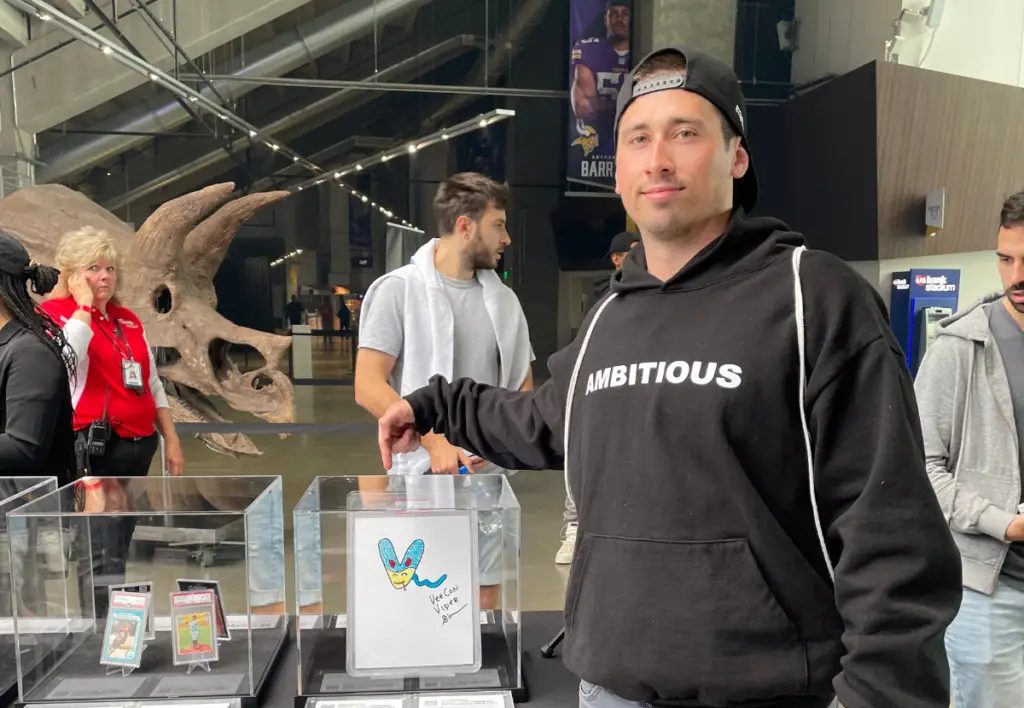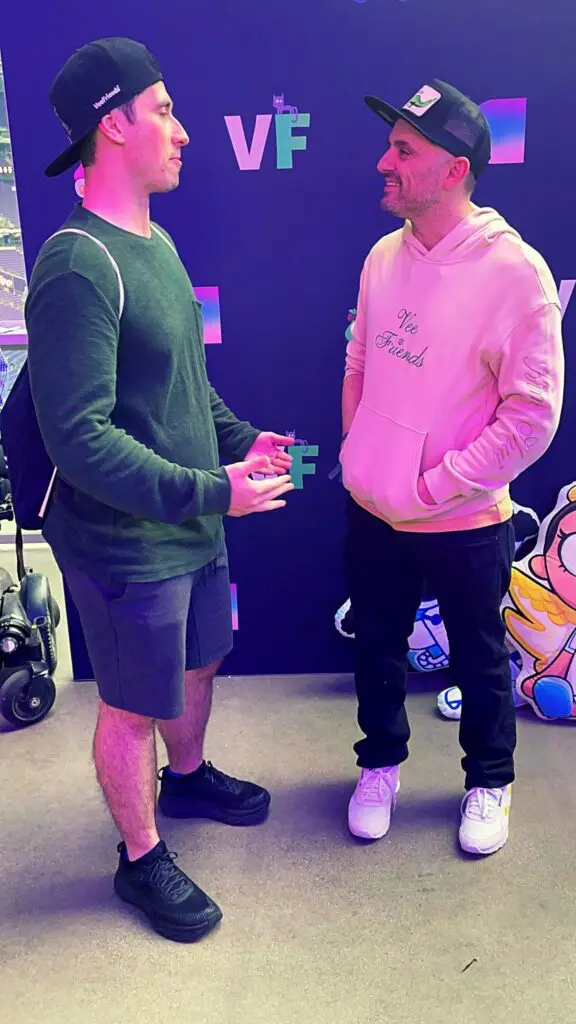Cyber Scrilla’s Origin Story
Cyber Scrilla started in January 2021 as a small Web3-focused blog. Since then, it has grown to tens of thousands of monthly users.
The goal of Cyber Scrilla is to help you learn how to utilize new technology associated with Web3.
NFTs, Cryptocurrency, and the Metaverse are all things we strive to simplify and help you better understand so that you can take advantage of it all.
Along the way, Cyber Scrilla has always aimed to be:
- Honest: There is a ton of information surrounding Web3 and its associated technology, but not all of it is true or even created by an expert. We strive to provide honest reviews and data to help readers make the best decisions possible to improve their personal and business endeavors.
- Actionable: Our reviews and guides aim to help readers take action and speed up their learning curve with actionable steps, written by someone with hands-on experience.
- Impactful: One of our main goals is to provide valuable information that gives readers the tools and knowledge they need to benefit their lives.
- Fun: Web3 doesn’t have to be boring. In fact, it’s quite the opposite! It’s really fun and has the potential to be extremely rewarding, we want to share our enjoyment with you.
With technology advancing faster than ever before, it’s important to stay up-to-date with the latest trends and developments. According to Zippia, there are nearly 5 billion internet users and over 5 billion smartphone users in the world, with well over 1.35 million tech startups across the globe.
The online world has evolved rapidly over the years and continues to do so at an unprecedented pace. To fully appreciate the current state of the internet, it’s worth taking a quick look back at its history.
- Web 1.0 (1990): The internet was first introduced to the world, but it was mainly used by researchers and students. At this time, the internet was read-only and decentralized, meaning that users could only read the information that was available.
However, within five years, browsers like Mosaic and Microsoft Internet Explorer were introduced, enabling the everyday person to browse the web. - Web 2.0 (2005): Around 2005 (only 15 years later), people began to see the potential of the internet from a personal and business perspective. This led to the emergence of social media platforms such as Facebook, YouTube, and Twitter, which allowed users to publish their own content online.
While this was exciting, it also led to the centralization of data centers required to run these platforms. With the introduction of smartphones, the centralization process accelerated. Today, there are countless concerns regarding advertising, data breaches, privacy, censorship, and data loss. - Web 3.0 (2021): With the introduction of cryptocurrency, NFTs, and other technological advancements, Web3 has taken the world by storm. The main goal of Web3 is to bring back decentralization to the internet, which gives power back to the users as opposed to large corporations.
By using decentralized systems, Web3 aims to eliminate the need for central authorities and intermediaries, providing users with greater control over their data and online experiences.
Furthermore, Web3 aims to provide transparency and a censorship-resistant world where users have more control over their digital identity via digital ownership and authentication.
That said, there are many moving pieces to this new iteration of the internet, and it’s set to change the way our world operates. Cyber Scrilla aims to help you understand each moving part.
We aim to do this by creating simplified articles and other forms of content such as videos that break down everything that’s happening around in the space.
About Alex White-Gomez

Hey there! It’s great to meet you. My name is Alex White-Gomez, and I’m excited to share my story with you.
First off, I’m the brains behind Cyber Scrilla, a website dedicated to all things Web3. As a professional writer and self-proclaimed Web3 enthusiast, I’ve spent countless hours researching and writing about the latest advancements in Web3.
But I don’t just write about Web3, I put my money where my mouth is. I’ve invested tens of thousands of dollars into various Web3 brands, and have already seen a significant return on my investment (if only I had cashed out!).
I firmly believe that we’re just scratching the surface of what’s possible with Web3, and I’m in it for the long haul.
Along the way, I’ve had some incredible opportunities.
I was fortunate enough to work for Gary Vaynerchuk, a prominent figure in the Web3 space and serial entrepreneur.
And my work has been published by several distinguished digital media brands, allowing me to share my passion for Web3 with a wider audience.
Some places you might have seen my work include:
Although my work has been published on all these amazing sites, I still strive to create the best content on the topic I’m writing about. My work is far from done.
My Previous Experience
I was never an A+ student. I was well-behaved, but the thought of school made me vomit—literally. I did just enough to get by. Outside of school, I focused on the things I really enjoyed like creating animations, playing video games, riding my bike, and working out.
I don’t have a college degree.
Rather, I’ve been an entrepreneur since I was a kid. I started off selling lemonade, flowers, and anything else I could find to make a little bit of cash so I could buy things that I found interesting. Mainly video games and other cool tech toys.
My first “real” job was at a grocery store, where I worked my way up to store manager within a matter of years. I eventually realized the amount of work I was putting in along with the stress wasn’t worth it.
That’s when I realized I could use my work ethic to build something myself.
So, I quit my job and took a minimum wage position at a startup detailing cars. It was a struggle, but it was also one of the most fun jobs I’ve ever worked. And I learned a lot about running a small business.
Eventually, I was introduced to the owner of another startup in the marijuana industry. It was a shop located in a small town with only 400 people. After working a 12-hour shift to test it out, I decided it was worth the 200-mile drive.
I started out at the bottom as a budtender—basically a salesman. It didn’t take long for me to start incorporating what I had learned in the retail business to help the shop build out its entire inventory department which included marketing and a more systematic approach to inventory control.
From there, I went on to help build the wholesale department. At that point, I was managing two stores and a team of employees who I still adore to this day, along with supplying the state of Oregon with our own line of products.
On the side of all this, I created Cyber Scrilla. I had recently discovered Web3 through Gary Vee, and from that point on I was hooked. But, I noticed there was a lack of information regarding the technology, hence I created this website.
As great as things were going at the shop, I walked away from it all for an opportunity to work for Gary Vaynerchuk as his NFT/Web3 writer. Not only did I take a pay cut, but I left behind a team of people I really enjoyed working with. Nonetheless, I couldn’t pass it up.

After completing a 6-month contract working for Gary’s company, I decided to take what I had learned and apply it all to building Cyber Scrilla. Since then, I haven’t looked back.
Editorial Standards
Disclaimer: Cyber Scrilla doesn’t accept payments for favorable reviews, and the affiliates and companies we work with don’t influence their ranking or inclusion in our articles.
It’s our goal to provide unbiased, honest content to help our readers make the best decisions possible. This means testing out products, services, and platforms and providing transparent, honest results to help you make the right decision.
The accuracy of the information on this site is important to us. So, if you spot any errors or have any questions, please get in touch through our Contact Page.
Also, you can find more content on YouTube, Twitter, Instagram, and LinkedIn.
